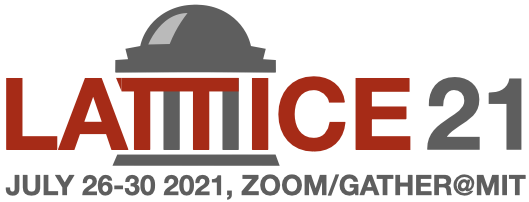Speakers
Description
A high-statistics computation of meson-baryon scattering amplitudes is presented on a single ensemble from the Coordinated Lattice Simulations (CLS) consortium with $m_{\pi}=200{\rm MeV}$ and $N_{\rm f} = 2+1$ dynamical fermions. The finite-volume approach is employed to determine the lowest few partial waves from ground and excited state energies computed by solving the Generalized Eigenvalue Problem. This analysis requires matrices of correlation functions between single- and two-hadron interpolating operators which are projected onto definite spatial momenta and finite-volume irreducible representations using the stochastic LapH approach to quark propagation. Results are presented for the $I=3/2$ $p$-wave amplitude which includes the $\Delta(1232)$ resonance and the $I=0$ $s$-wave amplitude with unit strangeness relevant for the $\Lambda(1405)$.




